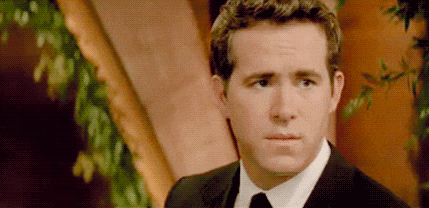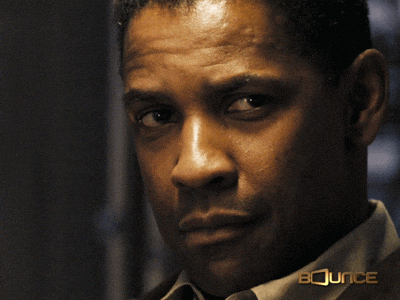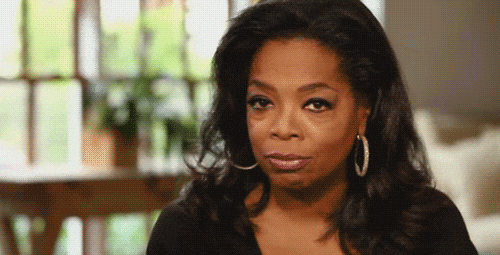Smirk Meaning: Why This Simple Expression Can Be Flirty, Rude, or Clever
Talk Nerdy To Me’s: @StaffWriter
The simple facial expression known as a smirk carries multiple meanings which range from flirtatious to offensive or clever depending on the context.
Most people don’t realize that a tiny little lip curl, the smirk, can say way more than it seems. It falls somewhere between a full-on smile and a frown because it is never fully happy or sad. Its vibe can swing from funny to sarcastic, or even a little cheeky or teasing. To really understand what someone is trying to communicate, you have to pay attention to the context, their body language, and all the subtle social cues.
This article explores the smirk from multiple perspectives, including its dictionary definition, role in body language, social and cultural meanings, and historical development in the English language. By the end, you will understand why this tiny facial gesture is both fascinating and complex.
Understanding the Smirk
Definition of Smirk
A smirk according to the English dictionary represents a facial expression which displays smugness and self-satisfaction and affected superiority. The word functions as a noun to describe facial expression (“a smirk crossed her face”) and as a verb to describe the act of smirking (“he smirked when he realized he was right”).
A smirk indicates that the person finds something funny or has inside information which others lack. A smirk exists as a distinct facial expression which shows complex emotions that most people struggle to interpret. This ambiguity is what makes it so socially interesting — and sometimes misinterpreted.
Body Language and Smirk Meaning
A smirk doesn’t just happen on its own — you usually need a little context to figure out what someone’s really trying to say. Body language, gestures, eye contact, and even the tone of their voice all work together to give the full picture. Let’s break down some examples so you can see how different combos totally change the vibe of a smirk:
Confidence and Authority: A person who shows confidence and authority will display a slow deliberate smirk while maintaining eye contact with you and keeping their body position steady. People often perceive this as a confident, almost strategic social signal.
Playful Teasing: A person uses a smirk along with an eyebrow lift and a gentle head movement to show playful or flirtatious behavior or to share a personal joke. The smirk in this situation occurs frequently between close friends and romantic partners because they share a mutual understanding.
Arrogance or Contempt: A smirk with crossed arms and an eye-roll and dismissive glance express superiority and sarcasm and mockery. The behavior shows disrespect when it occurs in official or formal events.
A person's smirk expression will vary based on the circumstances and the duration of their smirk. A quick, fleeting smirk can indicate playful amusement, while a lingering smirk may signal arrogance or derision.
Smirk vs. Smile
A smile uses the entire facial area to create a warm and inviting expression that includes eye contact. A smirk appears as a smaller facial expression which remains controlled and shows an uneven smile that affects only one side of the mouth.
The smirk exists in multiple interpretations because it can be seen as attractive in some situations yet mocking in different circumstances and playful in additional cases. The complexity of smirks makes them less suitable for formal social situations because they can lead to misunderstandings. Accurate social cue reading depends on recognizing the distinction between a smile and a smirk.
Common Questions About Smirks
What Does It Mean When You Smirk?
A smirk functions as a small facial expression which typically indicates self-satisfaction and amusement and quiet confidence. The interpretation of this phrase depends on the situation:
Playful: Signaling inside knowledge or humor shared between friends.
Sarcastic: Mocking or teasing someone subtly.
Arrogant: Demonstrating superiority or self-assuredness without verbal communication.
Because a smirk can convey multiple layers of emotion simultaneously, it often creates confusion for observers — is the person teasing, flirting, or subtly mocking?
Is Smirk Positive or Negative?
A smirk can be both positive and negative.
Positive: It may communicate humor, flirtation, charm, or shared understanding. For instance, a flirty smirk often signals interest and playful engagement.
Negative: A smirk can express mockery, sarcasm, or superiority, particularly if paired with dismissive gestures like eye-rolls or turned shoulders.
It might show humor, flirtation, charm, or a shared understanding. When two people trade playful smirks, it often signals mutual attraction.
On the flip side, a smirk paired with dismissive body language like eye-rolls or turned shoulders can come across as mocking, sarcastic, or superior.
How you read a smirk really depends on the relationship between the people involved, the situation, and even cultural background. What seems playful in one setting might feel offensive in another.
Is Smirking Disrespectful?
The act of smirking creates a perception of disrespect when used in formal or serious situations. The expression of a small smile in these situations usually indicates that someone is not interested or they are being condescending or mocking. Your facial expression during workplace evaluation creates a perception that you are showing disrespect to others.
A smirk between friends and family members or in everyday social situations typically means they are playfully teasing each other. A smirk appears based on the situation and the relationship between people in the room.
Is a Smirk Flirty?
Absolutely. A flirty smirk functions as a nonverbal signal of attraction. When paired with eye contact and timing, it communicates subtle interest, curiosity, or playfulness.
A flirty smirk is often seen in romantic comedies, TV shows, social media clips, and everyday interactions. It allows someone to communicate attraction or intrigue without words, creating a sense of mystery and engagement.
Examples of Smirk in Different Contexts
Flirty Smirk
In romantic or playful scenarios, a smirk can signal interest, confidence, and enigmatic charm. It is a subtle tool for nonverbal flirting, often more effective than overt verbal signals.
Movies, television, and platforms like TikTok frequently showcase smirks as a shortcut to romance or intrigue, relying on the audience to recognize the emotional subtext.
Rude Smirk
A smirk used incorrectly can convey arrogance, superiority, or contempt. For example, smirking at a colleague’s mistake in a professional meeting communicates disrespect and can damage relationships.
A rude smirk often accompanies dismissive gestures, like eye-rolls or shoulder shrugs, emphasizing the condescending tone. Recognizing this type of smirk helps navigate social and professional interactions effectively.
Clever Smirk
A smirk can also communicate shared understanding, inside jokes, or subtle cleverness. In literature, two characters may exchange a smirk to indicate complicity or mutual recognition of a secret.
This “clever smirk” conveys nonverbal intelligence, allowing people to share meaning without words. It is often context-dependent, requiring shared knowledge or situational awareness to be fully understood.
The Vocabulary of Smirk
Smirk as a Verb and Noun
Noun: “She gave a knowing smirk.”
Verb: “He smirked when he realized he had won the game.”
Both forms carry the idea of self-satisfaction, amusement, or subtle superiority. The word enriches communication by allowing speakers to convey complex emotional cues concisely.
Grammar and Usage
“Smirk” follows standard English grammar rules. As a verb, it conjugates normally: smirk, smirked, smirking. As a noun, it functions as a subject or object.
Its tone, however, is flexible. The word can describe playful teasing, sarcasm, flirtation, or even mild contempt, depending on context and accompanying body language.
The Evolution of Smirk: A Word History
The word smirk has existed for centuries in the English language. Early usage often referred to a simple smile or facial expression without the layers of emotion recognized today.
Over time, the smirk acquired nuances of slyness, superiority, and flirtation. Literary examples illustrate this shift: older texts used “smirk” neutrally, while contemporary writing emphasizes irony, sarcasm, or subtle emotional cues.
Cultural changes, media representation, and interpersonal communication norms contributed to the modern interpretation of a smirk as a versatile and sometimes ambiguous social signal.
Psychological and Social Insights on Smirks
Why Humans Smirk
Psychologists suggest smirks are a social tool. They allow individuals to communicate complex ideas without words:
Self-confidence: Subtle dominance or authority.
Humor: Playful teasing or joking.
Social bonding: Shared understanding or inside knowledge.
Flirtation: Nonverbal signaling of attraction.
Smirks help humans navigate social hierarchies and relationships, often revealing personality traits such as wit, charm, or arrogance.
How to Read a Smirk
Reading a smirk needs you to pay attention to the surrounding signs that appear in the situation.
Eyes: Are they engaged and smiling, or cold and detached?
The body maintains a state of relaxation or tension or defensive positioning.
The environment exists in a formal or casual or playful or tense state.
The ability to recognize these small facial expressions enables you to understand what a smirk means in different situations.
Cultural Depictions of Smirks
In Media and Literature
Smirks appear in all forms of media including movies and TV shows and literature to show hidden intentions. Storytelling benefits from iconic characters who display signature smirks which range from charming rogues to cunning villains and playful love interests.
In Social Media
The social media platforms TikTok and Instagram and Snapchat have made micro-expressions such as smirks into popular tools for users to create humor and flirt with others and share social commentary. The delivery of humor and superiority through playful facial expressions in viral videos depends on small facial expressions.
Practical Tips for Using and Interpreting Smirks
Start by observing the situation to determine if the exchange has a playful or formal or tense atmosphere.
Observe the body language of the person you are interacting with because their posture and eye contact and gestures will reveal important information.
Examine the different ways people interact with each other through their relationships with close friends versus colleagues versus strangers.
Strategic use of smirks can create positive effects in social situations through playful teasing and flirtation and subtle humor.
Use this expression only in casual situations because it may be misinterpreted as disrespectful in formal professional environments.
Why Smirks Fascinate Us
A smirk holds great interest because it expresses multiple emotions through minimal facial movements. A small facial expression can convey multiple meanings at once including flirtation and dominance and cleverness and sarcasm. The human brain contains specialized mechanisms which enable us to detect these small facial expressions because smirks function as strong social communication tools.
The study of smirks enables us to understand emotional subtleties as well as nonverbal signals and social relationships between people. The skill to recognize playful smiles from condescending ones helps people manage social interactions by choosing suitable reactions.
Takeaway:
A smirk functions as a small facial expression which produces significant social effects. The delivery of the message depends on the situation and the way the person delivers it through their body language and the timing of their words. The ability to observe smirks enables us to better understand social situations and prevent social errors.



